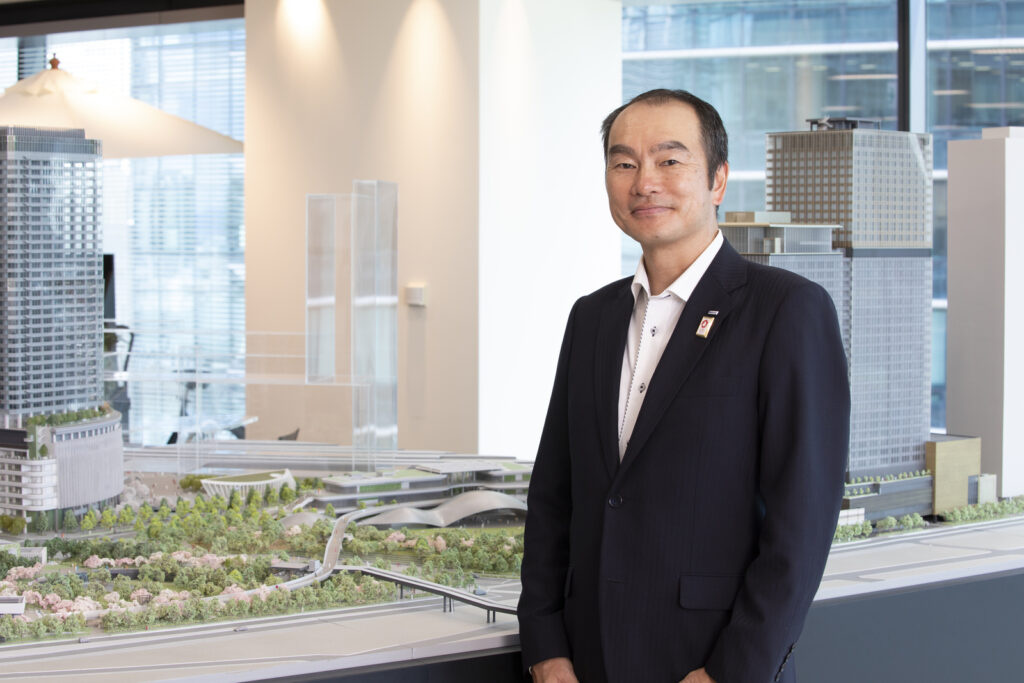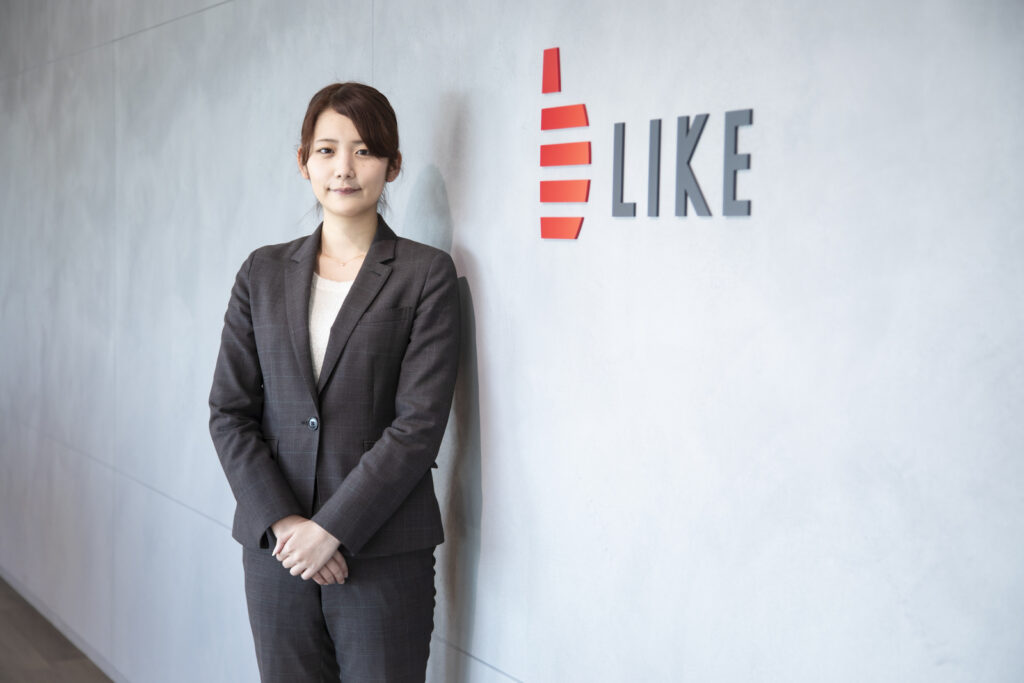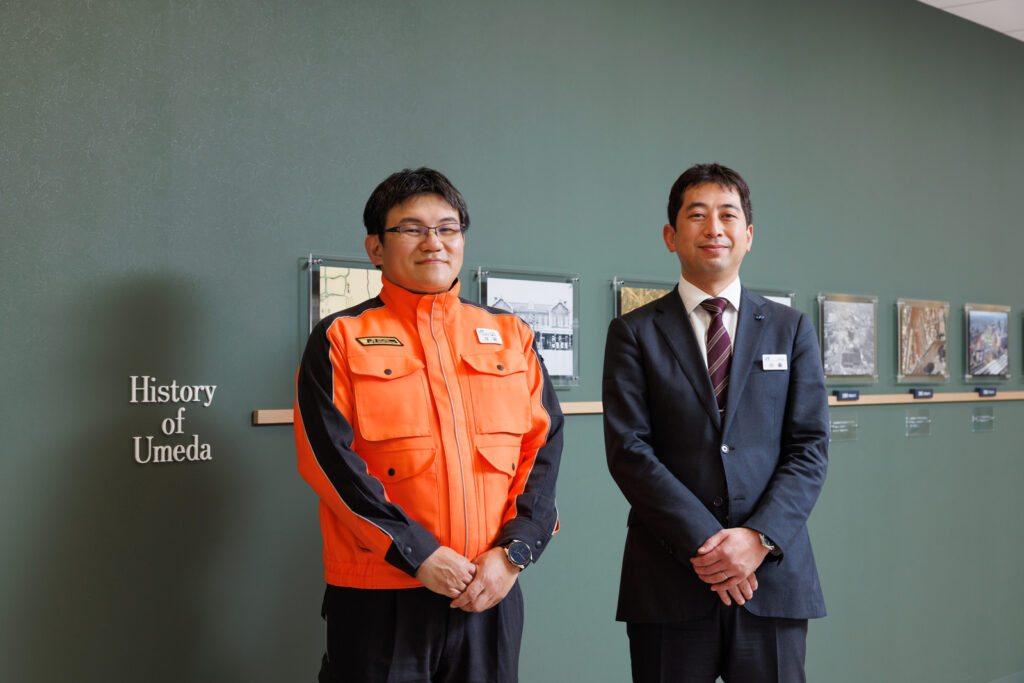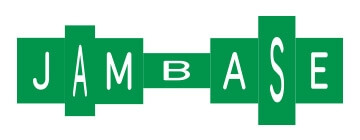New temporary buildings, to change the nature of cities
Masashi Nishio
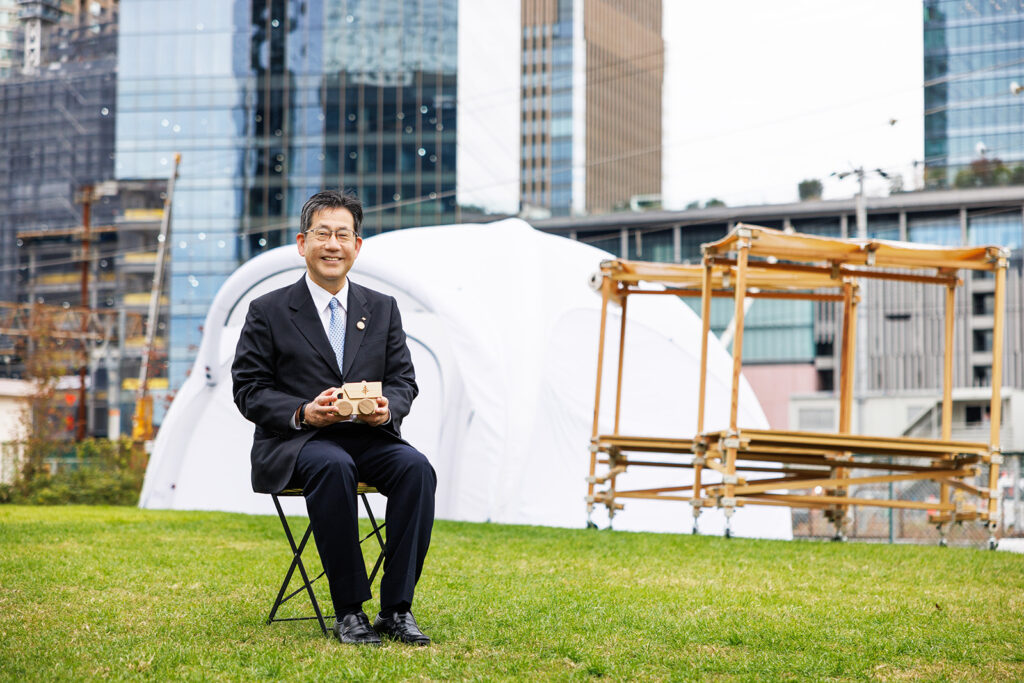
Recently, the notion of renting or sharing goods rather than owning them has become more mainstream. Nishio Rent All Co., Ltd., is renowned for pioneering a comprehensive rental business, which started with construction machinery rentals. Masashi Nishio, president of the company, agreed to sit with us for an interview.
“We first started to rent out construction equipment in 1965, a time of strong economic growth, marked by a construction boom leading up to the 1970 Osaka World Expo. Back then, construction machinery was in very short supply, resulting in a high demand for rental equipment. At the time, rental was considered equivalent to temporary procurement, but later managerial thinking shifted toward its being more efficient to use rental equipment whenever the need arises rather than having outright ownership of them. And as the sharing economy has become more popular recently, it seems that opportunities for rental or sharing have increased—not just for economic efficiency, but also to avoid wasting resources and to minimize the burden on the global environment.”
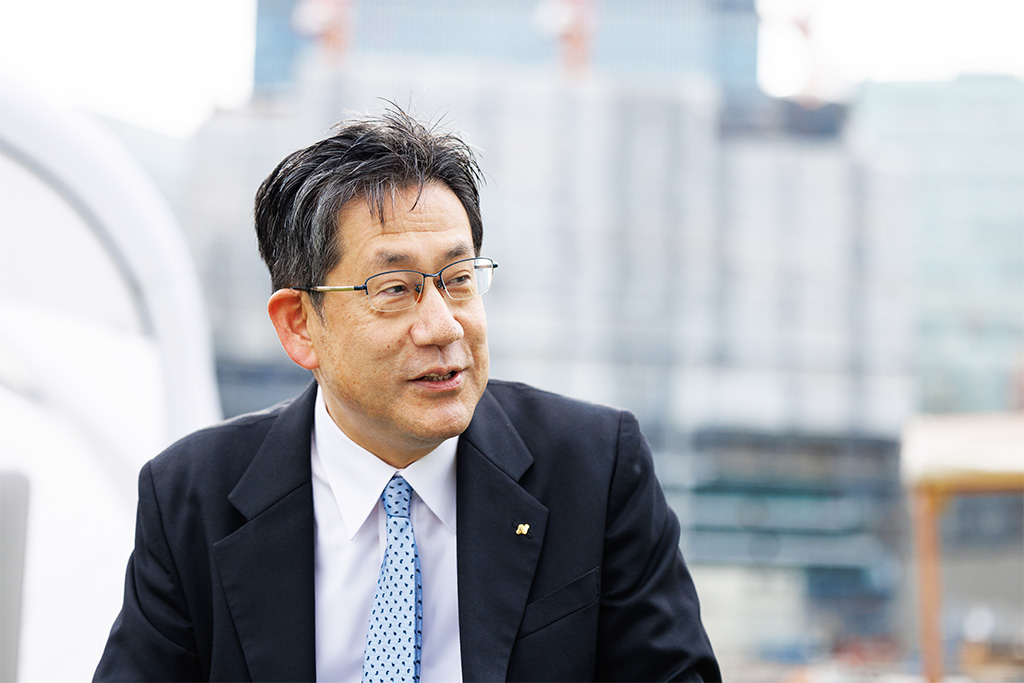
Nishio Rent All is an operational partner in Umekita Sotoniwa Square, a 1,000-day demonstration space adjacent to the Umekita 2nd Project still under development in Osaka. Mr. Nishio said that working there has afforded an excellent opportunity to put into practice a new venture.
“Until now, we have specialized in renting out equipment, such as for events, but we have been interested in starting a business that could propose solutions to various social issues through the effective use of rental services across a wider spectrum. We became involved with operations at Umekita Sotoniwa Square around that time, and I thought we could bring my vision to reality. One of these is the Midori Office (‘green office’).”
Midori Office was a verification trial conducted in October 2020 that involved temporarily moving some of the head office functions to Umekita Sotoniwa Square. The practicality of their business continuity planning (BCP) was verified using temporary facilities, such as the mobile office trailers handled by the company and wireless communication systems, to determine whether normal operation is possible in a temporary outdoor environment in the event of an emergency, such as a natural disaster, and what sort of impact working outdoors would have on workers.
“During this period, there were times when we feared we might actually be hit by a real typhoon, but I sense that we became somehow psychologically closer to the Urban Renaissance Agency (UR) and the two start-ups with whom we conducted this verification trial. You know, normally we make an appointment for a meeting by phone or email. However, as they were only a few seconds away on foot, it was easier to just visit them directly. I realized that if such an environment, where opinions can quickly be exchanged during ad hoc meetings, were established on a larger scale throughout the Umekita 2nd Project, it could be very effective for incubating new ideas and quickly developing new businesses.”
Other new possibilities for public or open spaces that are being explored at Umekita Sotoniwa Square include “Kasetsu no chikara” (The Power of Temporary Construction), where Lighter, Quicker, Cheaper (LQC) products are displayed to highlight the know-how that has been accumulated at construction sites and events, and “Umekita bosai no chikara” (The Power of Umekita Disaster Management), a disaster preparedness event that simulates a city-center disaster.
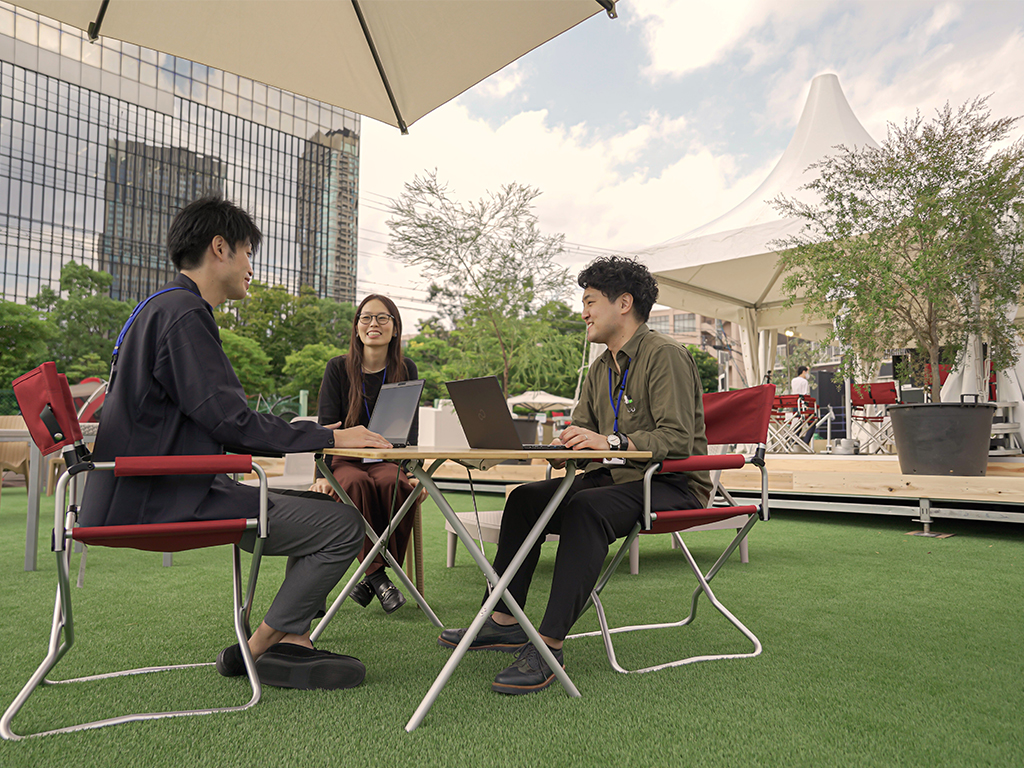
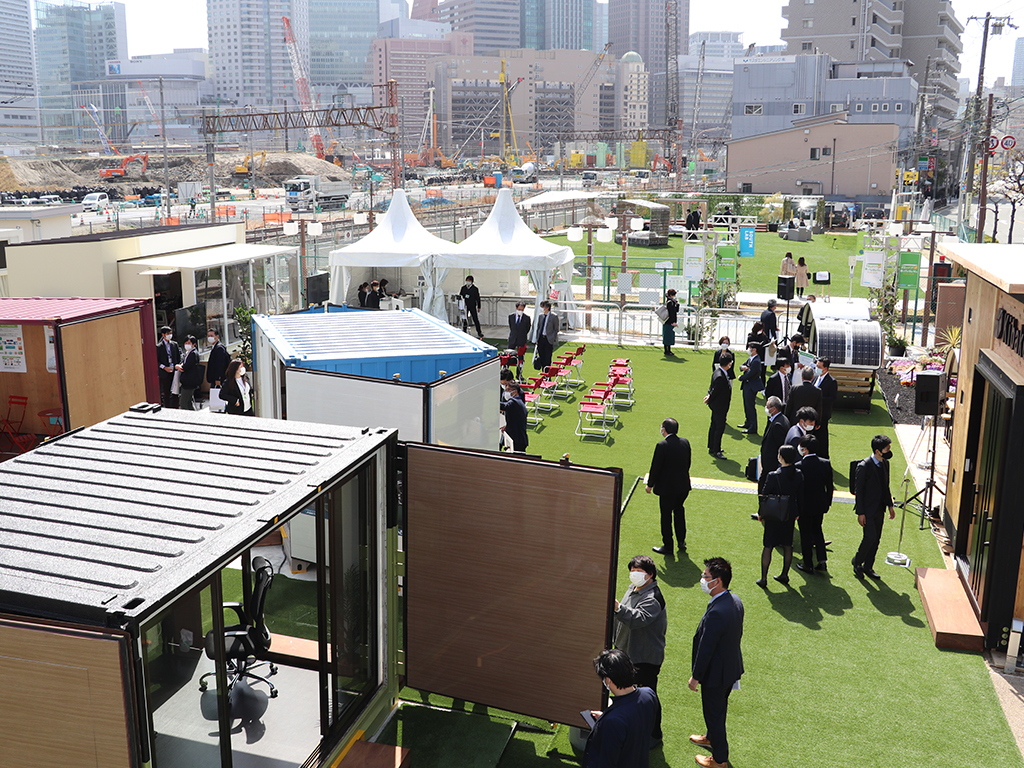
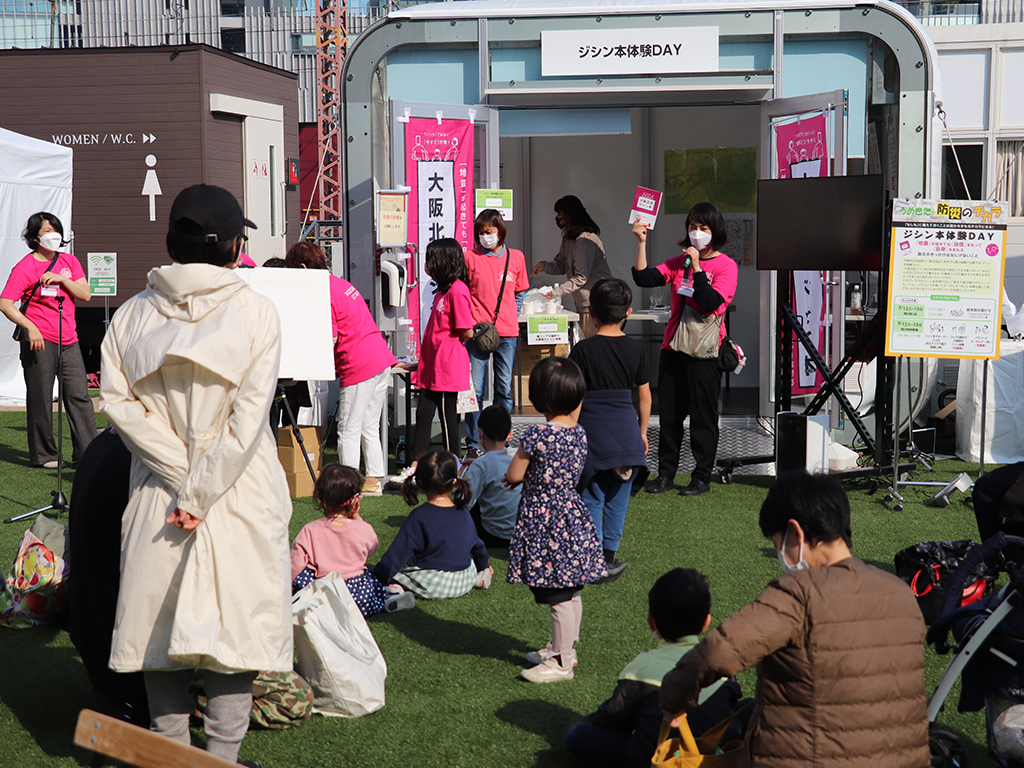
At the end of March 2023, the Nishio Rent All Sakishima R&D International Exchange Center (provisional name) will be completed at Sakishima in the Osaka Bay area. This will be a new hub for technological development and human resource training. Mr. Nishio explains the concept behind the facility.
“Our company’s R&D department will be on the western side of the 10,000 tsubo (33,000 square meter) site. The plans for the building include a pedestrian deck that serves as both a plaza and a pedestrian crossing, which we hope will facilitate collaboration with local businesses and members of the community. We also plan to build an approximately 1,350-square-meter wooden arena, as well as carrying out projects to revitalize the local community in cooperation with the neighboring Mizuno Corporation and Morinomiya University of Medical Sciences.” A wooden research facility and processing plant will be built on the eastern side of the site. Mr. Nishio is convinced that there will be a greater focus on large wooden buildings in the future, and that their numbers will increase, even in urban areas.
One of the world’s largest wooden structures will also be constructed for the 2025 Osaka-Kansai World Expo: the symbolic “Ring” canopy of the venue.
“The reason for recommending wooden pavilions is that Yumeshima—the scheduled location for the expo—is reclaimed land, making the digging of deep foundations impossible. However, if the pavilions are made of wood, the foundations only need to go down about one meter. Also, the construction period can be significantly reduced, and once the Expo is over, the wood can be reused, thus reducing industrial waste. However, wood is a very delicate material, whose residual strength is affected by water content, so the final work must be done on the spot. Using this facility as a final collection site and processing plant for timber enables swifter construction of wooden buildings for the Osaka-Kansai Expo and other urban areas.
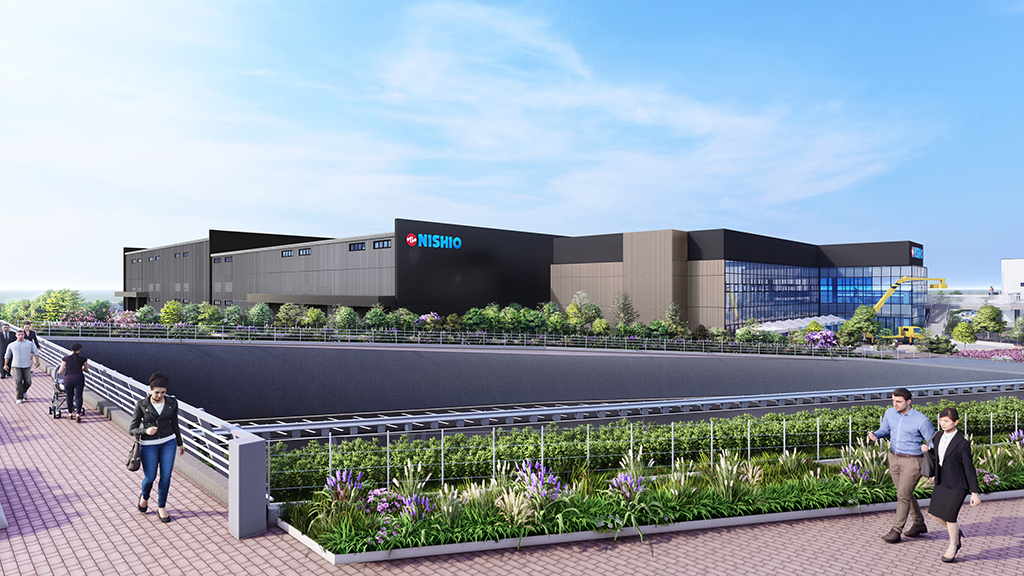
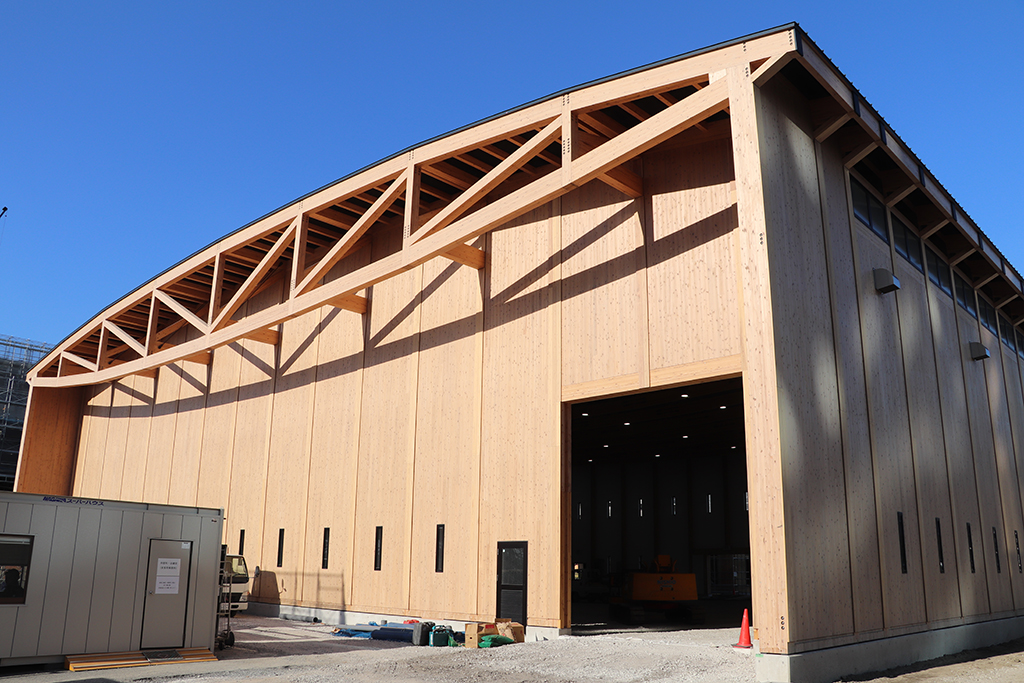
At the end, we asked about the potential for using modern temporary buildings in city centers.
He replied, “Although we generally call these temporary, our real aim is to eliminate the fence between temporary and “real” structures. Basically, a temporary structure is legally defined as one that will be in use for less than a year, and their purposes are also limited. Buildings are put up on the assumption that they will be used for 30 or 50 years, but depending on the purpose, it should be feasible to use a large tent as a hospital for only five years, for example. However, under current legislation, that is impossible. And if a more flexible way of use were permitted, it would make possible a smoother urban redevelopment, such as repurposing buildings constructed as gyms in areas with declining populations for commercial use. We want to propose such possibilities through the 2025 Osaka-Kansai Expo pavilion, and we consider this large urban redevelopment in the 2025 Expo and the Umekita 2nd Project as a golden opportunity for deregulation.”
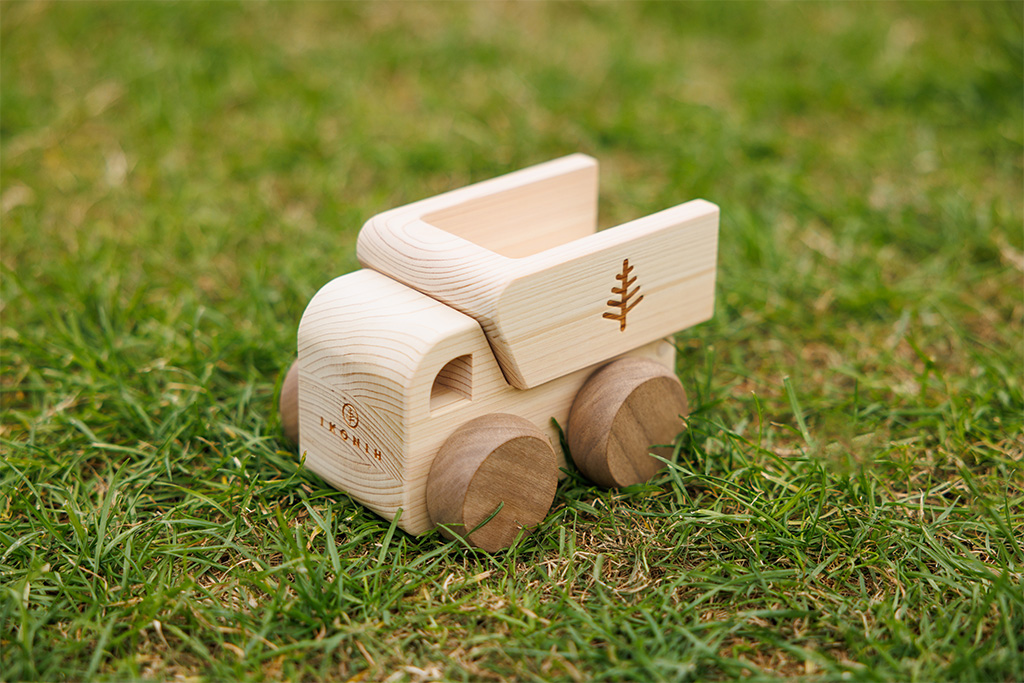
The knowledge acquired by Nishio Rent All through the verification trial at the Umekita Sotoniwa Square, and temporary wooden buildings using new technology, offer the potential to use public spaces in cities more freely and flexibly, transforming the future urban townscape.
Masashi Nishio
President of Nishio Rent All Co., Ltd.
1960: Born in Osaka prefecture.
1985: Graduated from the Faculty of Economics at the University of Tokyo.
1987: Joined Nishio Rent All after working at Komatsu Ltd.
1994: Took over management from his father, Akira Nishio – the founder of Nishio Rent All.
photos: SADAHO NAITO text: AKIKO WAKIMOTO

 Share on Twitter
Share on Twitter Share on Facebook
Share on Facebook